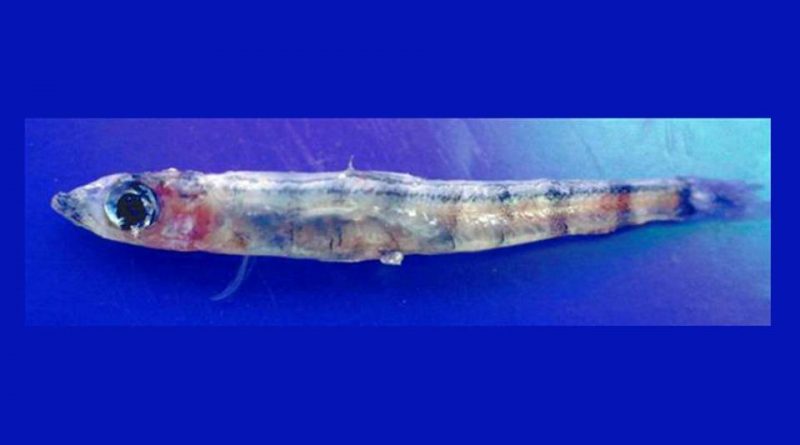Glossanodon leioglossus
Glossanodon leioglossus
The Smalltoothed argentine (Glossanodon leioglossus Valenciennes, 1848) is a sea fish belonging to the Argentinidae family.
Systematics –
From a systematic point of view it belongs to:
Eukaryota Domain,
Kingdom Animalia,
Phylum Chordata,
Actinopterygii class,
Order Osmeriformes,
Argentinidae family,
Genus Glossanodon,
G. leioglossus species.
The term is synonymous:
– Argentina leioglossus Valenciennes.
Geographic Distribution and Habitat –
The Smalltoothed argentine is a fish found in the western Mediterranean Sea and in the adjacent Atlantic Ocean. In the Italian seas, common in the Tyrrhenian Sea, rare in the Adriatic.
Its habitat is similar to the Argentine sphyraena species but frequents even deeper bottoms. On average, it lives at depths greater than 400 m, even if it sporadically rises in altitude.
Description –
Glossanodon leioglossus has an elongated and slightly compressed body on the sides, covered with deciduous scales. In section it has the shape of a 10-sided polygon.
The head is naked, with a large and round eye, small nostrils close together. The muzzle is hollowed out above.
The mouth is small and devoid of teeth on the jaws.
The mandible is slightly prominent. The upper margin of the operculum is rounded. The lingual teeth are numerous and very small; those palatine and vomerini are few in number and arranged in a single irregular series; the spines are long.
The dorsal is quite high with 12-14 rays which starts almost in the center of the body length and is inclined between 45 ° and 60 °. The ventral ones (12-14 rays) are slightly elongated and are inserted in the middle of the body. The pectorals (19-22 rays) have a low insertion point. The anal is very backward and has 13-14 elongated rays; opposite to the anal there is a small adipose fin. The caudal is forked with pointed lobes and 20 rays. In all, it has 49 vertebrae.
This species has a silver color, with three longitudinal black lines on the body (one on the back and two on the sides); at the apex of the muzzle there is a black pigmentation, which also extends into the mandible and the throat region.
The ventral and anal fins are pigmented while the others are hyaline. The swim bladder lacks the silvery pigment.
This fish is identical to the Argentina sphyraena species but is distinguished by having:
– fewer palatine teeth and fewer and much smaller lingual teeth;
– round and not wavy edge of the branchial operculum
– 20-22 rays on the pectoral fins against the 12-15 of Argentina sphyraena.
Biology –
Glossanodon leioglossus is a fish that reproduces in the November period when it lays pelagic eggs. The reproduction period goes from February to April and the eggs, after a short pelagic phase, sink.
Ecological Role –
Glossanodon leioglossus feeds on decapod and copepod crustaceans, benthic molluscs and small fish.
It is a fish that is caught with trawl nets from offshore fishing boats. Maximum known measurements around 160 mm.
It has excellent and delicate meats.
Guido Bissanti
Sources
– Wikipedia, the free encyclopedia.
– Louisy P., 2016. Guide to the identification of marine fish from Europe and the Mediterranean. Il Castello Editore, Milan.
– Nikiforos G., 2008. Mediterranean fauna. Giunti Editore, Florence.


